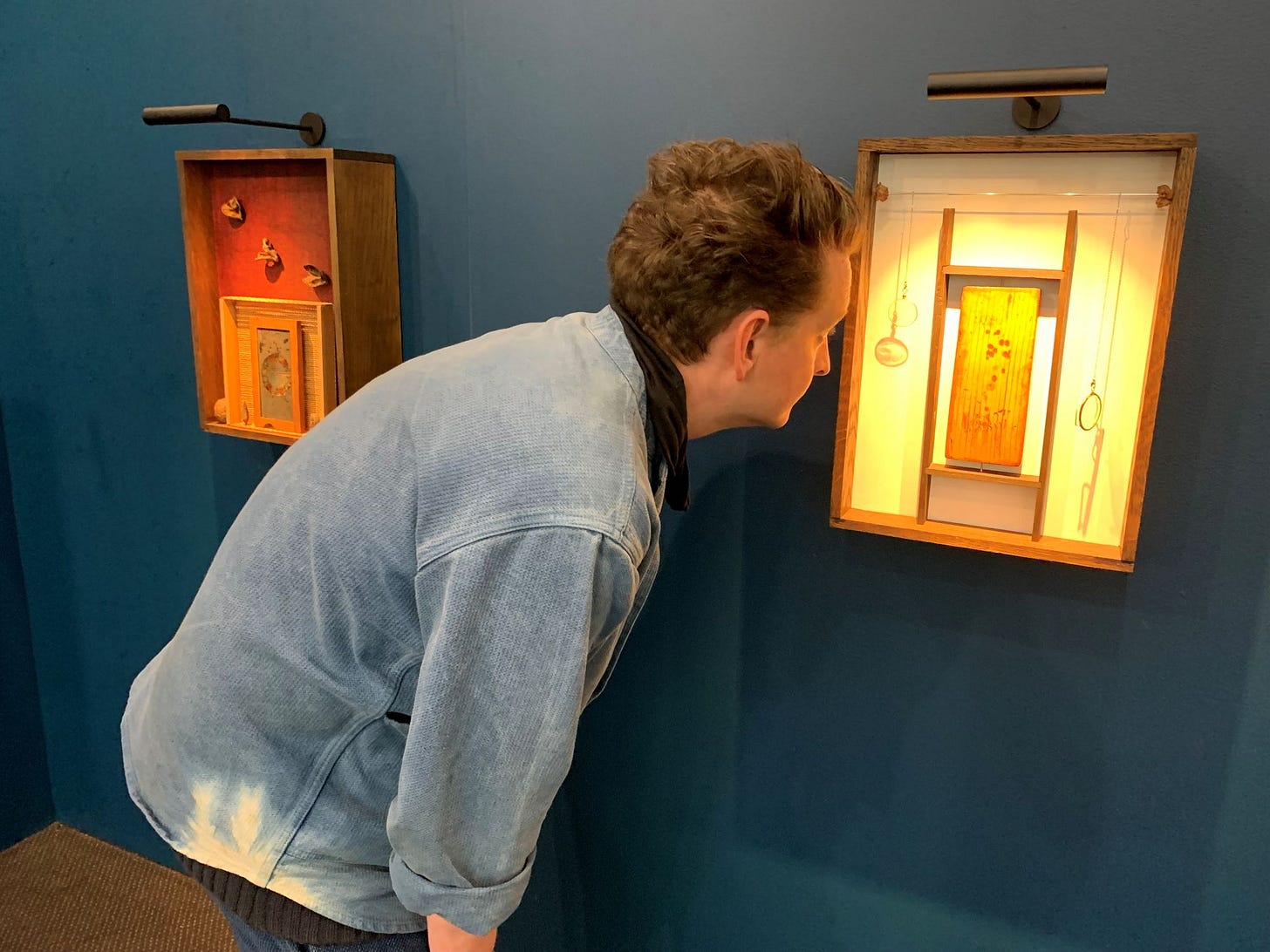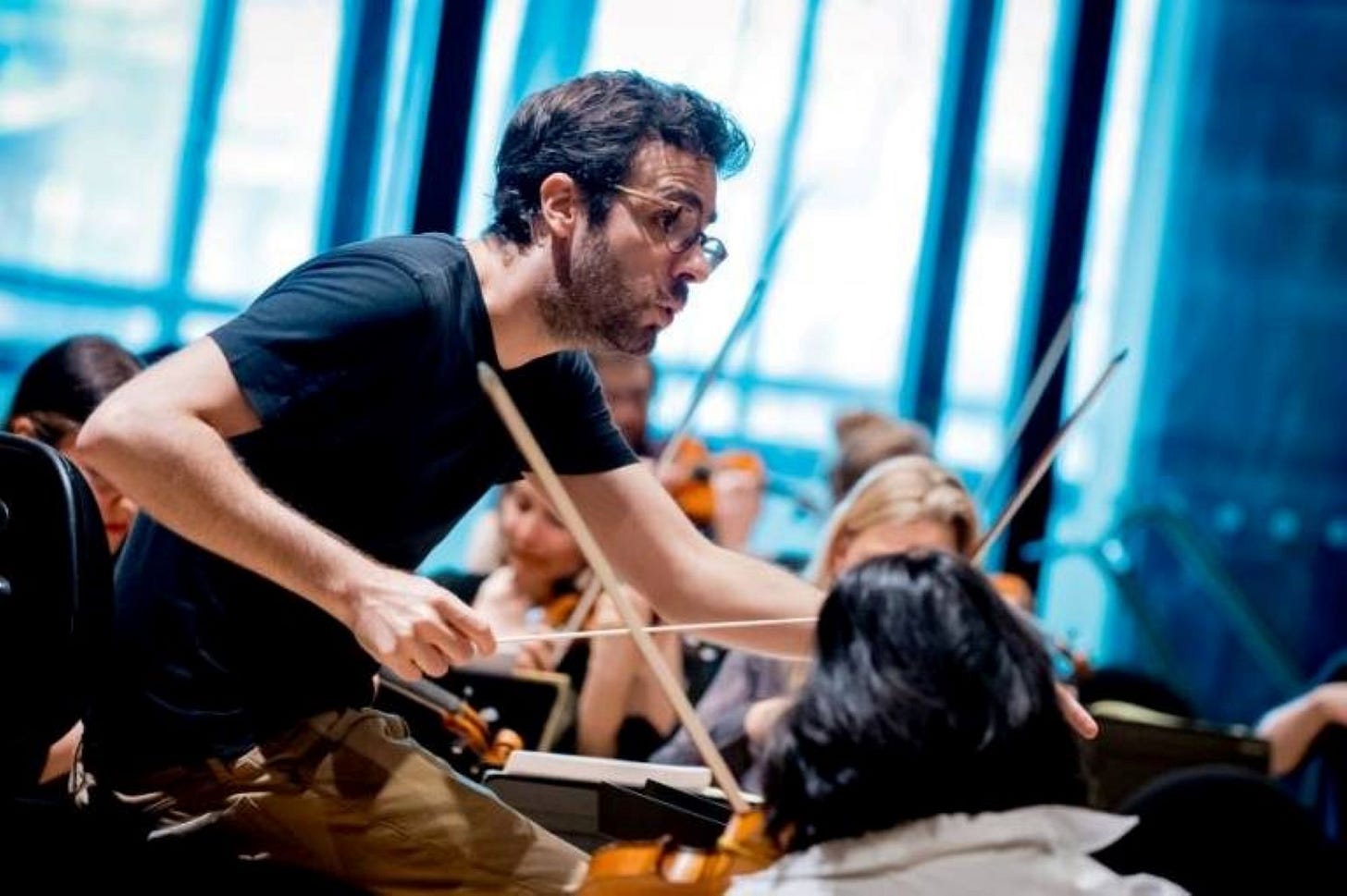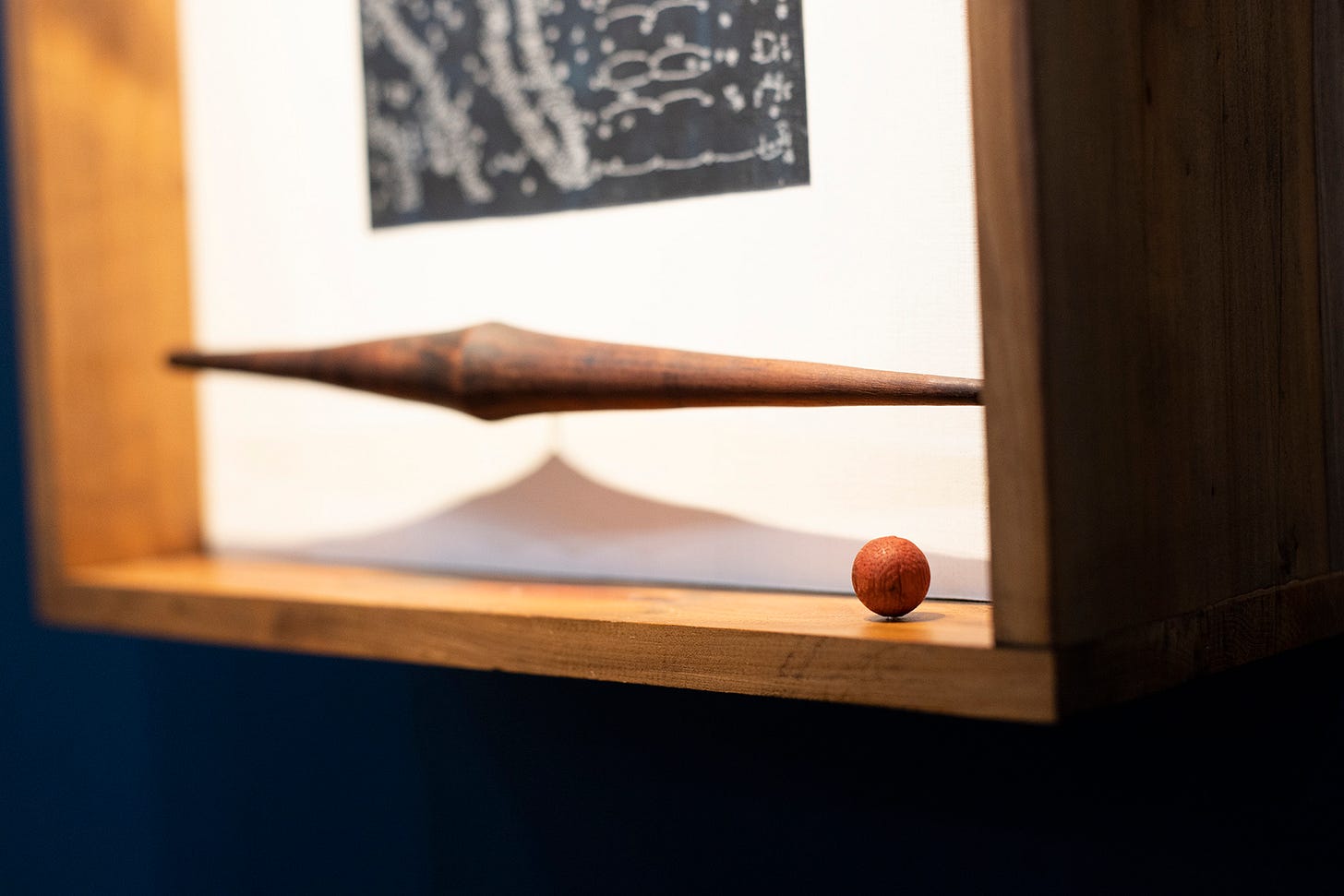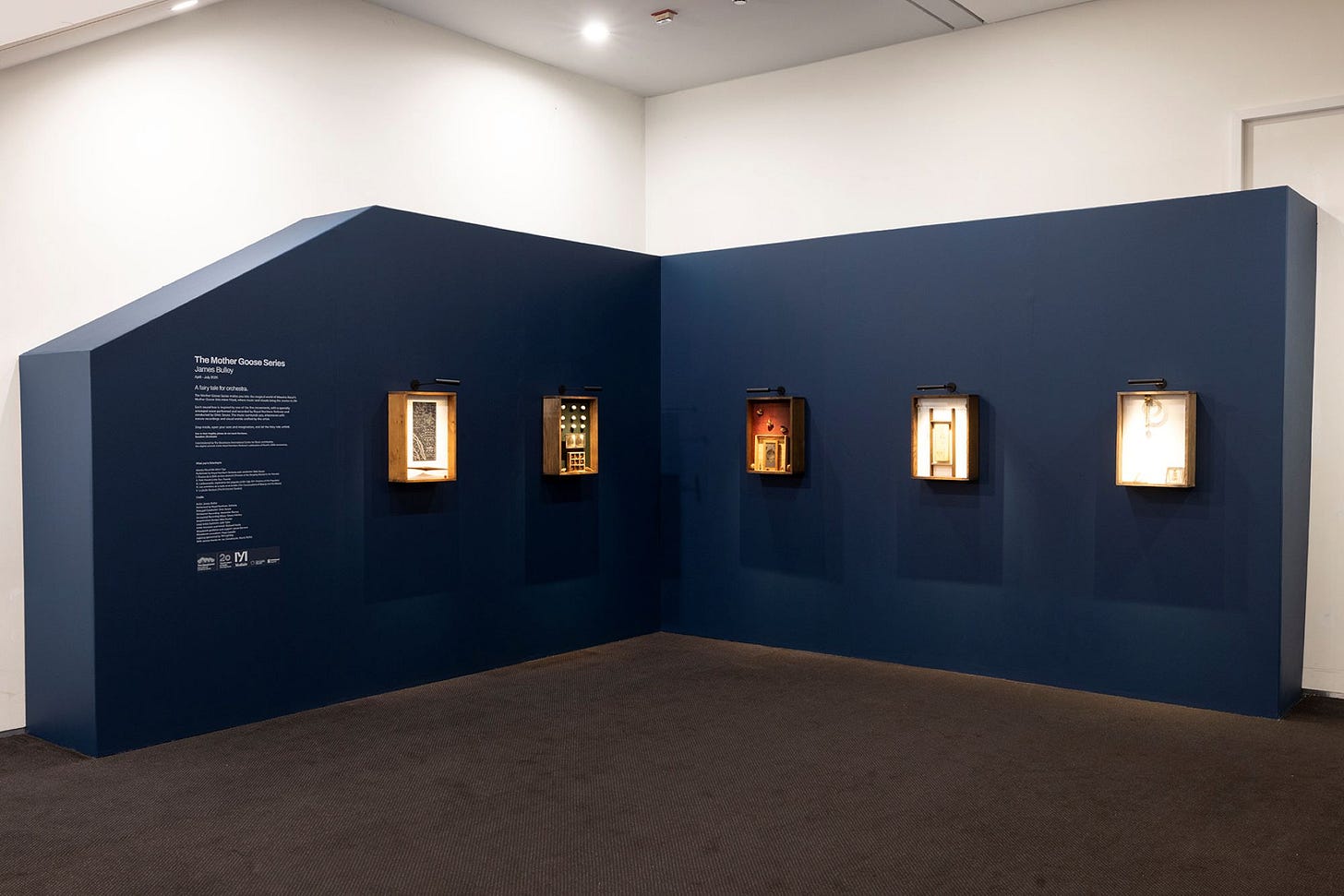Gateshead’s international centre for music, The Glasshouse, has renowned concert halls, a music school, various catering outlets and quite a few undesignated nooks and crannies beneath its curved roof.
One of these random spaces is at the end of the Level 2 balcony above the East door and it’s here you’ll find James Bulley’s exquisite artwork inspired by the music of Maurice Ravel.
Well, inspired by a particular composition, Mother Goose (Ma Mère l’Oye), known as a fairytale for orchestra, which Royal Northern Sinfonia is to perform here on May 16 as part of a worldwide celebration of the 150th anniversary of the French composer’s birth.
If you don’t at first find it with your eyes, follow your ears, for it’s an audio-visual piece consisting of five wall-mounted display boxes, each referencing one of the movements of the piece.
I find James – on his first visit to the North East; he grew up in Cornwall and Somerset - putting the finishing touches to his The Mother Goose Series and quietly delighted at realising an ambition.
“I’d been thinking about this form for quite a long time, probably the best part of a decade, thinking through the idea of what are in effect assemblage boxes, ways of exploring music and sound where it relates to objects framed within cabinets or boxes.
“There are particular artists that inspired it and it also draws on a set of pieces I made some time ago, landscape-based works called Tactus that are touch pieces for the blind and visually impaired.
“This was a wonderful opportunity.”
He owes it to Dinis Sousa, principal conductor of Royal Northern Sinfonia, who decided a special commission was needed to complement the concerts marking the Ravel anniversary.
Discussions with Mediale, York-based art producers and commissioners who have partnered previously with The Glasshouse, led to an approach to James as an artist likely to relish the challenge.
He has made many sound-based artworks for indoor and outdoor locations, commissioned by organisations including the National Trust, Historic Royal Palaces and Opera North.
Tactus, commissioned by Crafts Council UK, was exhibited in London in 2011 and Lithuania in 2016.
Among those artists who have particularly inspired him was the American Joseph Cornell (1903-72) who was influenced by the Surrealists and pioneered the creation of boxed assemblages made from found objects.
“Wonderful cabinet-type environments,” is how James describes them.
You can imagine Cornell and Ravel would have been able to sustain a conversation. Their lives did overlap, Ravel touring America in 1928, nine years before his death at the age of 62.
James tells of his own “incredible” real-life conversation with Dinis Sousa about Mother Goose and its five movements, the first four relating to French fairytales and the last a kind of self-portrait, Ravel’s “imagined world of not quite being able to get back to childhood but still being within that mindset”.
This conversation, James recalls, turned “very quickly” to the notion of five worlds or environments.
“As you look at Ravel’s life and what his interests were, you start to see how this might be reflected in the piece.
“He was a huge collector of automatons and mechanical things and his house in France, Le Belvédère, was full of this interesting stuff.”
Ravel was the son of an inventor (Joseph Ravel came up with an early version of the internal combustion engine and also a fairground attraction called the Whirlwind of Death which was withdrawn after the name proved horribly apt) and a mother he doted on.
Both were interested in music and encouraged their son who began piano lessons aged seven.
As a teenager his horizons were widened, as were those of other French composers such as Claude Debussy, by a big Paris exhibition, the Exposition Universelle of 1889, where he was struck by the innovative compositions of the Russian Nikolai Rimsky-Korsakov and the exotic, percussive sound of the Javanese gamelan.
Ravel also became an innovator who didn’t mind ruffling traditionalist feathers, as he did with Boléro which at its Paris premiere prompted one audience member to shout “Rubbish!” but which is now one of those pieces of classical music everyone seems to recognise and appreciate.
Any account of Ravel’s life will allude to his meticulous approach to music, which resulted in him leaving us with not a great deal of it, relatively speaking.
The former is a quality evidently shared by James Bulley although he says The Mother Goose Series was completed quite quickly, his work on it having begun only in November.
He explains his own creative journey, playing in orchestras and ensembles but moving to London in the end to study fine art, though working a lot with sound, and then studying for a PhD in fine art and music.
“My practice now sits very much between the two worlds, so I do a lot of compositional work with musicians but also gallery-based work and also in landscapes, exploring sound – its relationship to materials and how it works in space.”
To make his vision of The Mother Goose Series work, he rearranged the orchestration of the Ravel work and asked Dinis and the Royal Northern Sinfonia musicians to record particular passages and motifs.
His 20-minute version now leads you from box to beautifully lit box, each made of an appropriate wood sourced from fallen trees in London parks and each containing significant objects.
The first, recalling The Sleeping Beauty (or, as Ravel had it, Pavane de la Belle au bois dormant – Pavanne of the Sleeping Beauty in the Woods) is made of yew, representing, says James, eternal life but also death.
The box contains a wooden spindle and a red bead to represent a drop of blood from the girl’s pricked finger. The painted backdrop has musical notes in a night sky to represent Pisces, Ravel’s star sign.
Other boxes relate to the movements evoking the fairytales Little Tom Thumb (beech); Laideronnette, Empress of the Pagodas (ash); and Beauty and the Beast (oak).
The fifth box, Enchanted Garden, is made of hornbeam, James’s favourite, and it has a clock mechanism representing Ravel’s mother, “a huge presence in his life. It was awful for him when she died.
“You hear her motif, which I imagine was the strings, and a clarinet motif that was his father. That’s the joy of working with music in this way, the wonderful narratives within.”
And to the super-sensitive ear, it’s possible the sound transmitted from behind each box will change minutely as it progresses. “Sound resonates differently according to types of wood,” says James. “It’s why the choice of wood for speaker boxes is important.”
Describing every nuance and intricacy of James’s carefully realised artwork would run to thousands of words.
Best see and hear it for yourself – and then, to complete the experience, attend the concert on Friday, May 16 (7.30pm) when Dinis and Royal Northern Sinfonia will perform Ma Mère l’Oye, along with three other Ravel works (Steven Osborne the soloist in his Piano Concerto in G Major).
James intends to be at the concert and it’s possible there will be an on-stage chat between him and Dinis (details to be confirmed).










